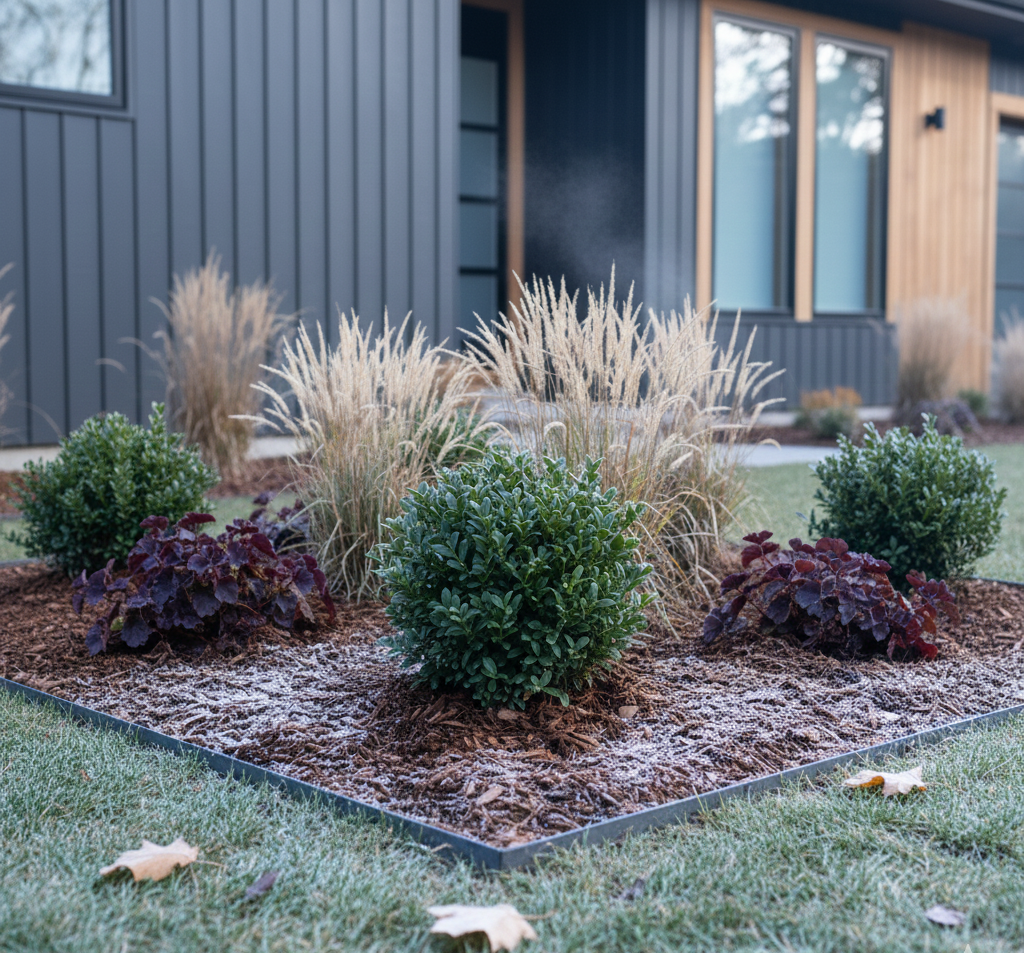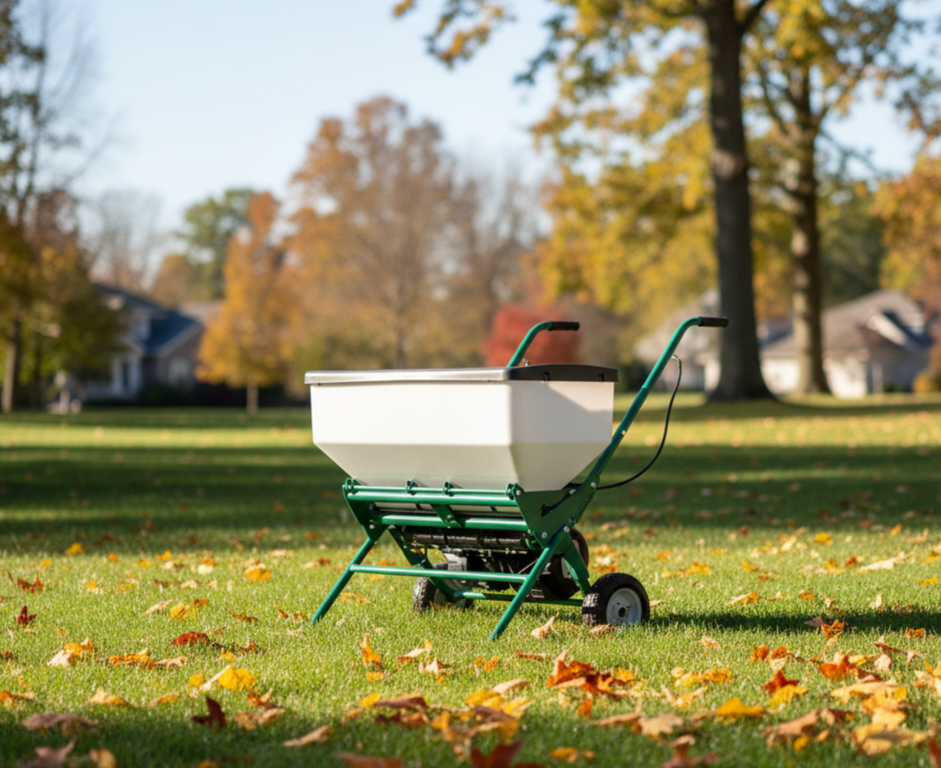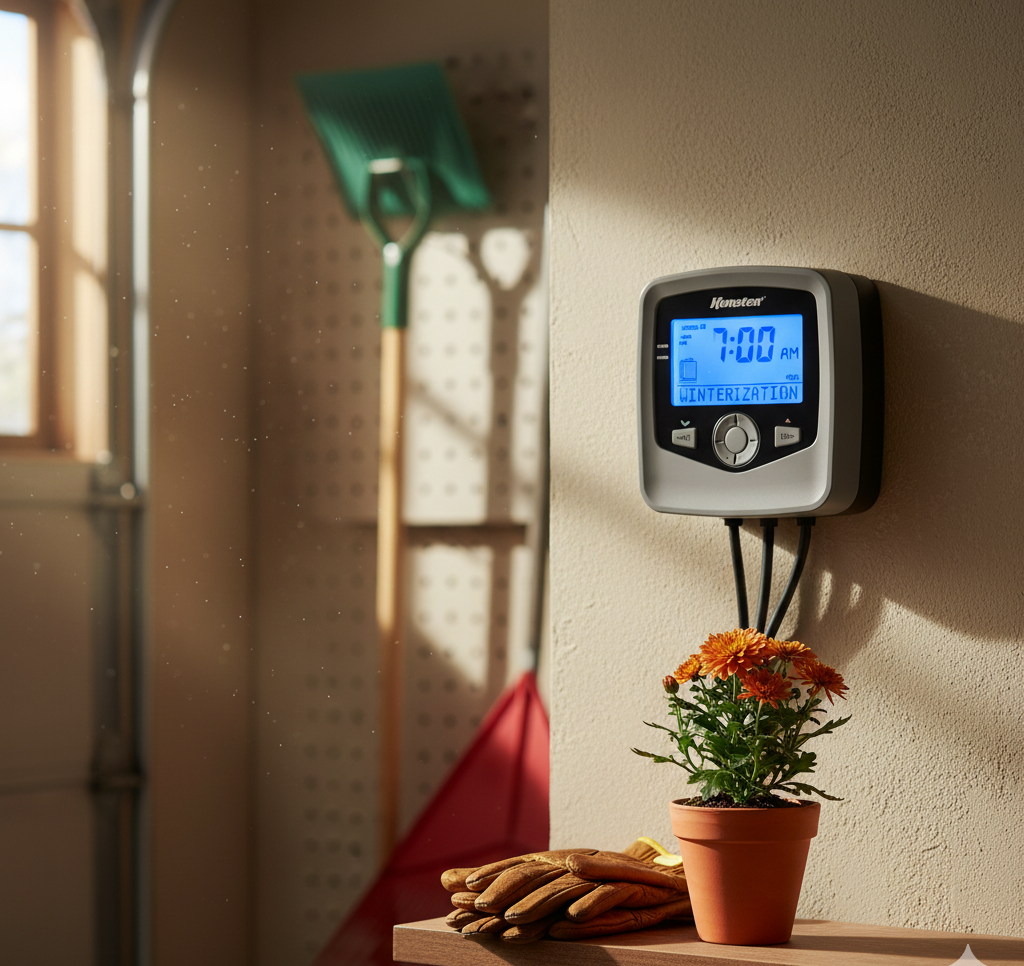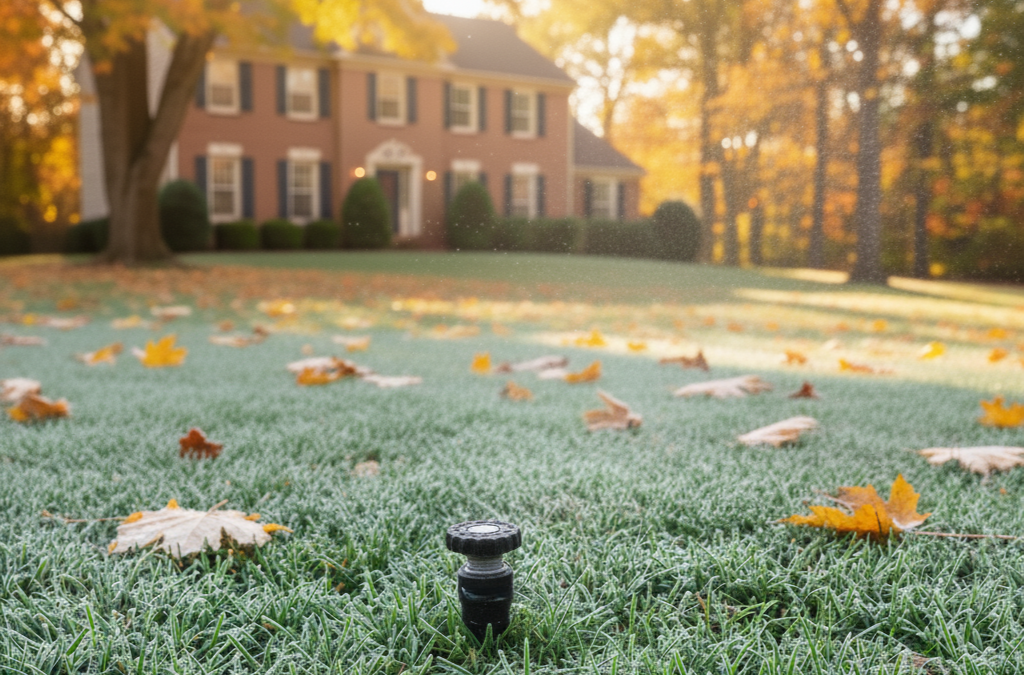The Right Timing for Lawn Care Maintenance
Fall is finally here! The magnificent colors of autumn present a wonderful sight, and it is hard to wait for that long-awaited burst of colors on your trees. The weather becomes colder and windier. The days become shorter, and the nights become longer. Among this transition, seeing those leaves on the trees turning yellow, orange, and red is such a treat to the eyes.
Unfortunately, when all those vibrant leaves start falling and litter your lawn, it's unlikely not to be frustrated. And, the more annoying fact is that they are not going anywhere as smoothly or quickly as planned. This means you have one more thing to do every weekend. Among all the hassles and with a long to-do list, huge piles of leaves also wait for you every Sunday.
Does this sound stressful? Of course, it does. Dealing with yard leaves can be a pain, but nothing is without a solution. So, you cannot leave your yard leaves covering your lawn for too long. When fall approaches, it's essential to prepare your lawn for winter and ensure no leaves are left on the ground. It is the best time to deal with your yard leaves.
The best way of removing them can be challenging, but doing so in a timely manner will bring long-term benefits for both homeowners like yourself or businesses who own property with green space nearby. In order to avoid damage over winter and ensure that your grass still looks beautiful when it comes around in spring, you must make sure there are no leaves left on the ground.
This article will discuss the best time to deal with your yard leaves, practical methods to remove yard leaves, some pocket-friendly tips to get rid of yard leaves, and other factors that may lackluster your landscaping efforts. So, let's get started.
When is the Best Time to Remove Leaves from Your Lawn?
Depending on where you live and the average regional climate, the arrival timing of fall may vary. People living in northern states should have raked up their last piles well before Thanksgiving. Whereas residents of the southern USA, including Maryland, North Carolina, Texas, Virginia, etc., may wait till the early weeks of the new year. In general, the best time to remove fallen leaves from your lawn and other property is as soon as possible after they have fallen.
The leaves that have fallen from the trees in your yard can be a nuisance. They can make it difficult to walk or drive through your property, and they can create an eyesore. Moreover, these leaves:
- Can clog gutters and drains, which can lead to water damage.
- It can also create a tripping hazard.
- It can influence the health of your yard by blocking out sunlight which prevents the grass from making and storing enough food for winter.
- Trap excess moisture, which can promote fungal growth
If you would like to hire a professional to remove your leaves, be sure to do so before they become too dry and difficult to move. If you are interested in the DIY option, blow or rake the yard clean once per week at a minimum.
Removing leaves before they have a chance to decompose is always the goal. However, there are different schools of thought when it comes to how long you should wait before bagging leaves. Some people advocate leaving them on the ground until they're wet, then running them through the lawnmower. Doing this helps to grind up leaves over time and speeds decomposition.
Other people like to bag their leaves as they fall to make
leaf removal easier. So, there is no right answer, but here's where timing comes into play. The longer you wait to remove leaves from your lawn, the harder it becomes to remove them. No matter what method you choose for dealing with your yard's fallen leaves, be sure to do it soon.
What is the Best Way to Remove Leaves from a Property?
The best way to remove leaves from a property will vary depending on the size of the property and the density of leaves that need to be removed. For properties that are covered with leaves, there are many time-tested methods for getting rid of the debris, such as:
- Raking
- Blowing or Vacuuming
- Mulching
-Raking
Hand raking is an old-fashioned and the most common way to remove leaves from a property. Raking leaves is followed mainly by disposal in either a compost pile or yard waste bag. It's affordable and easy to do yourself, but there are still some tips that will make your job easier. This includes having a good quality rake, rake with the wind and rake downhill, pulling the leaves toward you while raking, etc.
Raking can also be done with self-propelled lawn mower attachments and through Lawnbotts. If you're out in your yard and notice that there are too many leaves on your lawn to be handled by yourself, you can always call someone to do it for you.
There are numerous companies that specialize in yard cleanup and debris removal. If you are a resident of North Carolina, Green Garden Landscaping is the best option for this job. Green Garden Landscaping is a certified gardening and
landscaping company serving Sanford, Cameron, Carthage, Lillington, Broadway, and Aberdeen for decades. They provide a 100% warranty for all their services and are backed by the trust of thousands of customers.
-Blowing or Vacuuming
A leaf blower or vacuum is a versatile tool that many of us have in our garage. This tool is commonly used to aid yard cleanup, among many other benefits. If you have many leaves in your yard, removing them all by hand can be a daunting task.
Blowing leaves is a great way to save time and energy. This method of yard cleanup involves using a power blower or blowing leaves into the street, or packing in the waste bag. Leaf blower helps you remove leaves from areas where it would be challenging to use leaf rakes. Such areas include:
- On decks
- Fallen leaves between rocks
- Trapped leaves at the base of a fence
- In nooks and crannies around the house and outbuildings
-Mulching
You can collect fallen leaves by using the lawn mower bagging attachment and mulch these leaves before removing them from your lawn. It is a great way to help speed up decomposition and prevent any smothering of your grass or other plants. If you do this, you will need to use a two-inch-thick layer of mulch and make sure to cover the entire leaf-covered area.
Mulching allows these nutrients to be recycled back into your soil while providing an organic cover for bare spots or young trees fending off weeds themselves.
Tips and Tricks for Making Your Leaf Pile that's not only Easy but also Cost-Friendly
Why not go green this fall and make your compost pile? It's a great way to use up those old leaves lying around. To compost your leaves naturally, you can simply toss them into a pile and let nature run its course. The pile will decompose over time with the help of microorganisms in the soil that break down the leaves and create nutrient-rich dirt in their place.
If you want to leave them on the ground, aim to do so by early December at the latest.
By late next spring, you'll be able to enjoy all of the fantastic black gold. The first thing to make your leaf pile is grouping leaves of the same type, raking them up into small piles before combining similar types. Here is what you need to take care of while composting yard leaves:
Include Leaves that Make Excellent Compost
Here are some leaf types that are higher in nutrients and decompose fast.
- Maple,
- Birch,
- Ash,
- Cherry,
- Cottonwood
- Fruit trees
-Leaves to Avoid in Compost
Some types of leaves contain toxins and prevent some plant seeds from germinating. This is why grouping the same kind of leaves into small piles before making a large compost pile is important. From these small piles, you can discard unwanted leaves easily. The following are a few types of leaves to avoid altogether in compost:
- Walnut
- Eucalyptus
- Horse chestnut
-What Else Needs to Go into the Compost Pile?
Leave piles eventually decompose, no matter if you add something or not. However, adding specific components speeds up the decomposition. Generally, the more greens you can add, the fast it will work as it balances the brown elements of the compost. Here are some components that increase the pile's temperature and accelerate the decomposition:
- Fresh compost
- Food scraps
- Green grass clippings
- Coffee grounds and
- Manure (chickens, horse, rabbit, cow)
Why should I Clean Up My Yard After Fall has Passed?
When we think about cleaning and prepping the garden, it's typically in relation to springtime. However, there's value in starting your prep work now - even if you don't plan on planting until next year. Along with getting an early jump on launching a successful season ahead, tending your yard now will help in the following ways.
-Clean Lawn Helps Keeping Pests, Diseases, and Unwanted Critters at Bay
Removing dead plant material and thatch from your lawn sets the stage for healthy growth by eliminating competition for nutrients and water. Letting your garden go untended throughout fall and winter can be a mistake. Insects, rodents, and diseases can wreak havoc on an untended yard, while certain types of weeds will thrive in such climate conditions.
One of the best ways to clean up your yard is by removing any dead plant material. This includes leaves, branches, and other debris.
-Protecting Your Turf from Soggy Leaves
Fallen leaves get soggy due to rain or dew and block water, sunlight, and airflow. Removing thatch can allow water, air, and fertilizer to penetrate the soil more easily. The decaying process quickly stops in colder weather, so removing dead plant material will prevent disease and ground compaction problems from occurring over winter.
Reducing the Spread of Fungal and Bacterial Infections in Spring
Wet and decaying leaves spread fungal and bacterial infections. The most common fungal diseases that attack lawn grasses are patches, rings, and leaf blights. These will all leave you with dead spots or stripes in your yard. However, they can be identified by the appearance of affected areas that may overlap, so there's no distinct patterning visible for each type except when it comes to Blight.
-Fall Leaves Nourish Your Garden Beds if Leaves are Composted
After removing the plant material, it can be recycled through composting. If you have a compost bin, now is the time to add all of the organic material from your yard cleanup. Not only will this help to improve the fertility of your soil, but it will also help reduce the spread of fungal and bacterial infections in spring.
How Do I Prevent My Lawn from Dying Out During Winter?
Keeping your lawn healthy during winter is easy if you have aerated your soil in the fall. This will prevent soil compaction by allowing water and vegetation to penetrate the ground better. On the other hand, many factors can easily damage a frosted lawn.
For instance, walking on frozen grass tips can crack them, make them weak, or may kill your lawn. The damaged lawn is prone to crabgrass in spring. Therefore keep off the grass until the frost is gone or enough snow cover is down to protect the grass. Here are three ways you can keep your grass green year-round.
-Water Your Lawn in the Winter
Watering in winter is especially important when there is snow on the ground. The snow will not allow your grass to go through its usual dormant stage, during which it would die off. Moreover, lack of water desiccates the grass, eventually killing it. If you can, try to water your lawn at least once a week to ensure there is moisture in the soil when no more melting occurs.
-Use Fertilizers with Slow Release Nitrogen
Slow-release nitrogen is especially important in winter. When it is cold, plants do not readily absorb most nutrients. This type of fertilizer will give your garden the food it needs to stay green all year round without having you constantly provide high amounts of fertilizer. Consult Green Garden Landscaping to find the correct type of fertilizer for your lawn.
-Rake Leaves Regularly
Raking your leaves will allow sunlight and water to reach the grass underneath. This can be especially helpful compared to snow coverage, as all of that white snow usually blocks the sun. As you rake, just remember to always leave five inches of grass uncovered so that it may face the light.
-Avoid Walking On Your Lawn In the Winter
It might be tempting to run across your grass in your boots when it's covered in snow, but this will only damage the lawn. Try to avoid walking on your grass as much as possible, especially if it's frozen or wet.
What Can I Do if I Don't Have a Lot of Time to Spend on Maintaining My Yard but Still Want it to Look Nice?
If you don't have a lot of time to spend on maintaining your yard but still want it to look nice, consider hiring a leaf removal service. They'll come in, clean up fallen leaves from your lawn, trees, shrubs, and flower beds, and then dispose of them for you.
This will take the stress out of having to rake and bag your fallen leaves and can help you save money in the long run. Some types of yard work that are best left for professional landscapers include tree removal, shrub pruning, and large-scale lawn maintenance such as aerating and fertilizing.
A
Modeling Impact Report published in 2018 revealed that 267% of the investment is returned through lawn care services. Moreover, landscape maintenance and tree care return 100% of the investment. So, hiring a professional landscaping service such as Green Garden Landscaping will always return your investment in a profitable way.
In short,
The best time to remove fallen leaves from your lawn and other property is as soon as possible after they have fallen. The longer you wait, the more difficult it will become to remove them. If you want to save time and energy, or if your yard is too large for you to handle on your own, then it may be worth it to hire a professional leaf removal service.
With the help of a
professional leaf removal service in North Carolina like Green Garden Landscaping, you can get rid of all those leaves in your yard without breaking a sweat. If this sounds like something you'd be interested in giving a try, we recommend contacting one of our lawn care professionals today.









